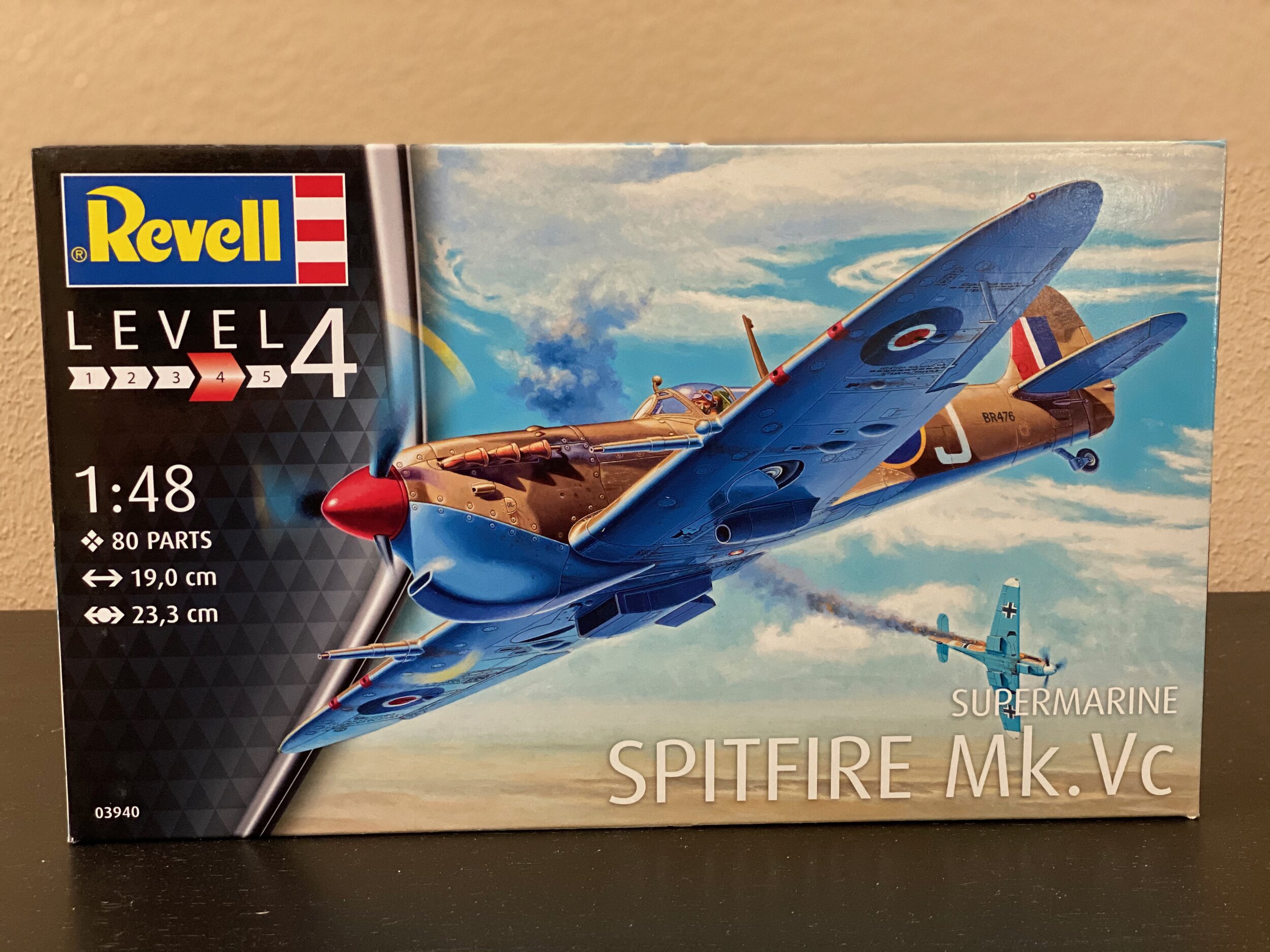This week's featured kit includes the 1/48 Revell Supermarine Spitfire Mk.Vc
This classic aircraft by Revell features the Spitfire Mk.Vc was built from 1941 onwards with a more powerful engine. The kit features: detailed cockpit and undercarriage Separate rudder and flaps Separate cockpit door Decal set for two RAF versions.
Following the Battle of Britain in 1940, the Royal Air Force had planned to replace its Spitfire Mk. I and II fighters with the Mk. III, which had been under development for two years. The Mk. III included significant improvements such as an improved wing design, a retractable tail wheel and a new Rolls-Royce Merlin XX engine.
Before the RAF could put the Mk. III into production, however, the Germans introduced the improved Messerschmitt Bf 109F. Since this new German fighter greatly outperformed the current Spitfires at high altitude, the RAF could not wait for the factories to be retooled for the Mk. III, and they hurriedly developed an interim aircraft, the Spitfire Mk. V (the Mk. IV designation had already been assigned to another version). Essentially, the Mk. V consisted of a modified Mk. II airframe with a new Rolls-Royce Merlin 45 engine (a Merlin XX modified to ease production and improve high altitude performance). Initially, the wing remained unchanged, but three different types emerged depending on the armament. With the suffix letter indicating the type of wing, the Mk. Va had eight Browning .303 machine guns, and the Mk. Vb had two Hispano 20mm cannon and four machine guns. The Spitfire Mk. Vc introduced the "universal" wing which enabled this variant to be fitted with various combinations of armament, including four 20mm cannon and four .303 machine guns.
Most Spitfire Mk. Vc fighters had the B version armament with the outer cannon positions being covered, but the C wing carried 120 rounds for each cannon versus only 60 for each cannon on the B wing. The universal wing also used a strengthened landing gear that had been moved two inched forward to correct the Spitfire's tendency to nose over on its propeller. In addition, the Spitfire Mk. Vb and Mk. Vc could carry two 250-pound bombs or one 500-pound bomb.
Unwilling to wait while the Mk. V went into hurried production, the RAF quickly converted more than 100 Spitfire Mk. I aircraft into the Mk. V version. These converted aircraft started arriving at the combat units in March 1941. In addition to these converted aircraft, a total of 6,464 Spitfire Mk. Vs were built between 1941 and 1943. Fighting on every front during the war, these Mk. Vs equipped more than 140 RAF squadrons, including the Eagle Squadrons composed of American volunteers flying for the RAF. Nine other Allied nations, including the United States, flew Mk. Vs. The U.S. Army Air Forces' 31st and 52nd Fighter Groups flew them first during Operation TORCH, the invasion of North Africa in November 1942. Some of the American pilots removed one machine gun from each wing to lessen weight and thereby improve maneuverability. Also, to protect the engine in the desert climate, the RAF topicalized (Trop) the Spitfire Mk. Vs by adding either a Vokes or a smaller Aboukir air filter to the aircraft.
Originally, the Spitfire had been designed as a short-range home-defense fighter, but by 1941 the RAF had begun offensive operations over Nazi-occupied Europe. To extend the Mk. Vs range, the RAF adopted 30- and 90-gallon fuel tanks which fit flush under the fuselage and were cable of being jettisoned. Also, as the war progressed and fewer enemy fighters were encountered, the Spitfires began flying ground strafing missions. To improve the low-altitude characteristics, most Spitfire Mk. Vs had their wingtips removed. Categorized as low-altitude fighters, these aircraft carried the prefix of "L.F." (i.e. Spitfire L.F. Mk. Vc).


